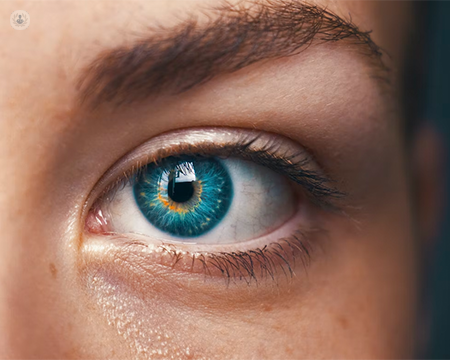What are toric IOLs, and how do they differ from contact lenses?
Autore:In one of our latest articles here below, we learn what toric lenses are, whether or not they are good for cataracts, and how long they typically last for, as esteemed consultant ophthalmologist, Mr Hadi Zambarakji, provides us with a comprehensive overview of toric lenses.

What are toric IOLs?
Cataract surgery is becoming a refractive procedure with patients wanting the best vision possible. One of the ways to achieve this is to correct the astigmatism. Similar to toric contact lenses, toric IOLs are designed to correct the cylindrical refractive error of a patient.
Unlike contact lenses, IOLs are stabilised in the crystalline lens bag. This means the vision will be stable and the implant shouldn’t move. Also, unlike toric contact lenses, the IOLs’ calculation is based on the corneal power and the length of the eye, while contact lenses take the whole refractive error of the eye into account.
Instruments, such as a biometer, are used to take the basic measurements and calculate the IOL power. For complex lenses, especially torics, topography is recommended. A full refractive workup, including a fundus exam, should be completed, and, if possible, an OCT scan, which is extremely useful when ruling out any pre-existing pathology.
Are toric lenses good for cataracts?
Toric lenses are an excellent development in the field of cataract surgery. They allow the surgeon to correct astigmatism using the lens implant being inserted at the time of cataract surgery.
How long does it take to get used to toric lenses after cataract surgery?
The benefits of a well-positioned toric lens are usually felt and noticed immediately. On average, it usually takes between one to two days for the vision to reach a good level after cataract surgery, and the toric IOL effect is evident as soon as the vision starts to clear.
How long do toric lens implants last?
As long as any other lens. They will effectively last for the patient’s lifetime.
What are the disadvantages of toric lenses?
Toric IOLs can rotate, especially early on, which means that they can lose their desired effect. If the lens rotation is significant, vision can worsen as a direct result.
Can toric lenses move after cataract surgery?
Yes. The risk of this happening is approximately five per cent with modern toric IOLs.
Mr Hadi Zambarakji is a highly esteemed consultant ophthalmologist who specialises in cataract surgery and toric IOLs. Visit his Top Doctors profile today to book a consultation with him.


